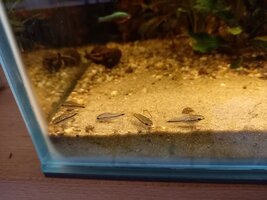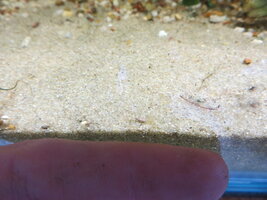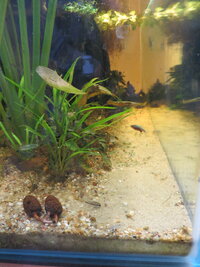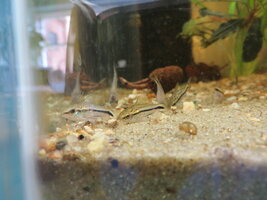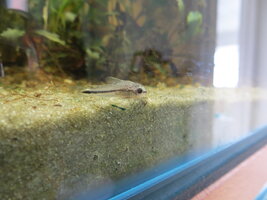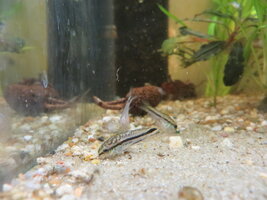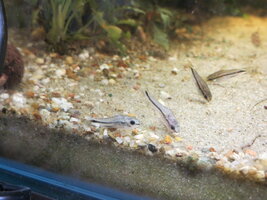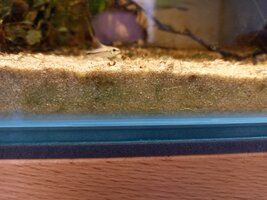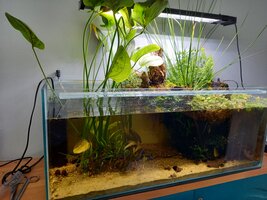Could be an external parasite such as Trichodina... Early signs of this infection start with losing colour, as goes for most fish, getting pale because of not feeling well and being irritated. In a later stadium and a worse infection is followed by flashing and scratching against surfaces, and then excisive secretion of mucus of the skin and or fin rot. If the parasite nests in or around the eye it will go blind and probably permanently lose this eye. Followed again by brain/nerve damage erratic behaviour and sudden death.
As far as I know, Corydoras pygmaea is wild-caught fish and is very susceptible to Trichodina infection, it might have it already when bought from the lfs and it's most likely fatal if not treated. I guess this because they are so tiny and this parasite is most likely a huge monster to them living in their skin. If the rest of the symptoms stay out then there is only one way to determine if it is this infection you should take several skin scrapes and put them under the microscope and watch out for this as shown in the picture below. Behaving like flying saucers hovering around.
Unfortunately taking a skin scrape from such a small fish most likely will cause to much damage and discomfort and will be fatal as well.
Fortunately, Trichodina infection can be cured pretty simply and effectively with a long-term 14-day dose of Praziquantel. The best product that I know to use for this is
FlukeSolve from VetArk or directly from its developers
fish-treatment.co.uk. This Prazi is in powder form and can safely be dosed 1 time in the recommended dosage and kept in the tank for 14 days without a water change. Even tho the description on the bag recommends a 24-hour treatment, but this is for flukes only. 14 days has no negative side effects on other fish, snails and or shrimps. It will kill Trichodina and also the hatched newborns from previously laid eggs. Therefore the 14-day marathon treatment is best for this type of monster.
All other Prazi products I know of are diluted in ethanol and are less safe and less convenient to use for long-term treatment.
It's a long shot without proper diagnosis, but since diagnosing such small fish is extremely difficult and doing nothing and taking a scrape both might be fatal anyway, it can't hurt to take a gamble and give it a try... It also helps against skin flukes and internal worms. And it's never a bad thing to have a bag of Flukesolve in the med case, since it has an indefinite shelf life if kept dry.


